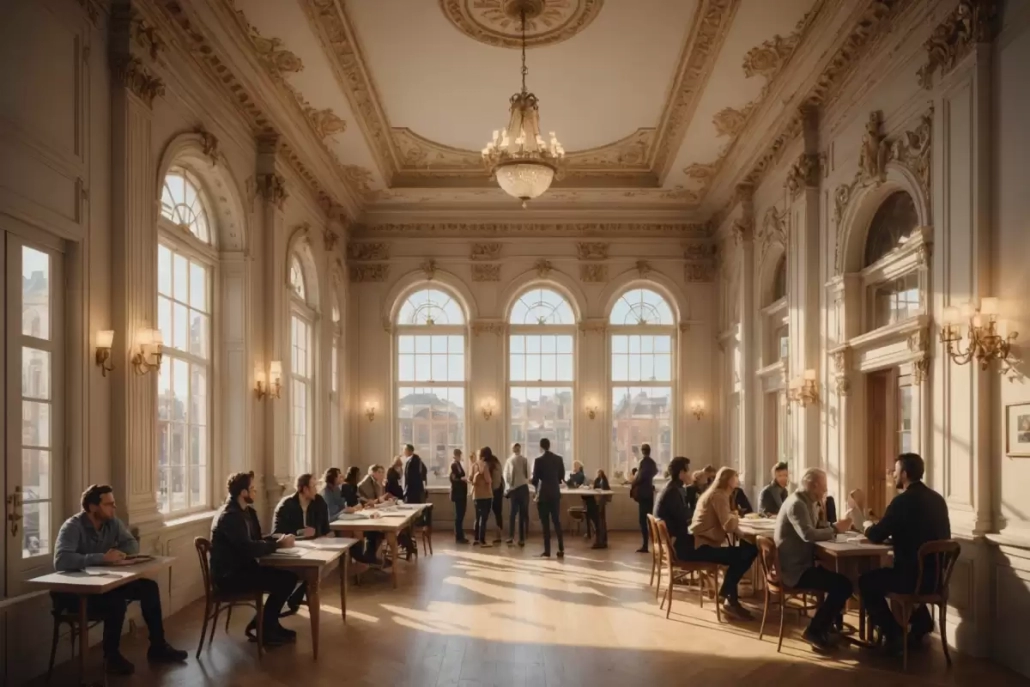Reviving History: The Art and Future of Adaptive Reuse in Modern Architecture
Imagine walking through a grand old building, with its ornate cornices and intricate woodwork whispering tales of a bygone era. Now, picture breathing new life into such a structure without losing its soul. This is the art of adaptive reuse—a concept that’s gaining traction in the world of architecture and design. It’s not just about preserving history; it’s about reimagining spaces to meet today’s needs while honoring their past. But how exactly does one strike this delicate balance, and why is it becoming a trendsetter in modern construction?
The Rise of Adaptive Reuse
Adaptive reuse is more than just a buzzword; it’s a sustainable approach to urban development. As cities grow and evolve, the pressure to preserve historical buildings while accommodating modern needs has never been greater. Instead of demolishing and rebuilding, adaptive reuse offers a creative solution: repurposing old structures for new uses. Think of an old factory transformed into chic loft apartments or a historic church becoming a vibrant community center. This approach not only conserves resources but also retains the cultural fabric of a place. Ever walked into a trendy café housed in a former fire station? That’s adaptive reuse at its finest.
Challenges of Breathing New Life into Old Structures
While the concept sounds romantic, the execution is anything but simple. One of the main challenges is maintaining the structural integrity of the original building while integrating modern amenities. This often involves a meticulous process of retrofitting, which can be both time-consuming and costly. Moreover, there’s the challenge of meeting current building codes and accessibility standards without compromising the historical essence of the structure. It’s a bit like walking a tightrope—one wrong move, and the whole project could lose its charm.
Creative Solutions in Adaptive Reuse
The beauty of adaptive reuse lies in its potential for innovation. Architects and designers are constantly coming up with ingenious ways to blend the old with the new. For instance, installing a glass atrium in a centuries-old building can flood the space with natural light while preserving its historical façade. Or consider using modern materials that mimic traditional ones, ensuring that new additions are in harmony with the original structure. It’s all about finding that sweet spot where history and modernity coexist seamlessly. Ever tried this yourself? It’s a game-changer!
The Role of Community and Collaboration
Adaptive reuse is not a solitary endeavor; it’s a collaborative process that often involves community engagement. Local residents, historians, and architects come together to ensure that the project reflects the community’s identity and values. Public consultations and workshops can provide valuable insights and foster a sense of ownership among locals. After all, these buildings are more than just bricks and mortar; they’re part of the community’s heritage. And when everyone’s on board, the result is a space that’s not only functional but also cherished by those who use it.
Linking to Heritage Construction
If you’re fascinated by the complexities of preserving history while embracing the future, you’ll find Magico Constructions’ insights on heritage construction invaluable. Their blog post, Heritage Construction Projects: How to Navigate the Complexities, delves deep into the intricacies of restoring historical buildings. It’s a must-read for anyone interested in the delicate art of balancing modern needs with historical integrity. Whether you’re an architect, a developer, or just someone who appreciates the beauty of old buildings, their expertise offers a fresh perspective on this challenging yet rewarding field.
Looking Ahead: The Future of Adaptive Reuse
As we move towards a more sustainable future, the trend of adaptive reuse is likely to gain even more momentum. It’s a testament to human creativity and ingenuity, proving that we can honor the past while building for the future. By embracing this approach, we’re not just preserving buildings; we’re preserving stories, memories, and identities. And isn’t that what makes a place truly special?
For those eager to explore further, check out ArchDaily’s comprehensive guide on adaptive reuse projects worldwide. It’s packed with inspiring examples and expert insights that’ll leave you itching to embark on your own adaptive reuse journey.









 Cosmopolitan Courier
Cosmopolitan Courier